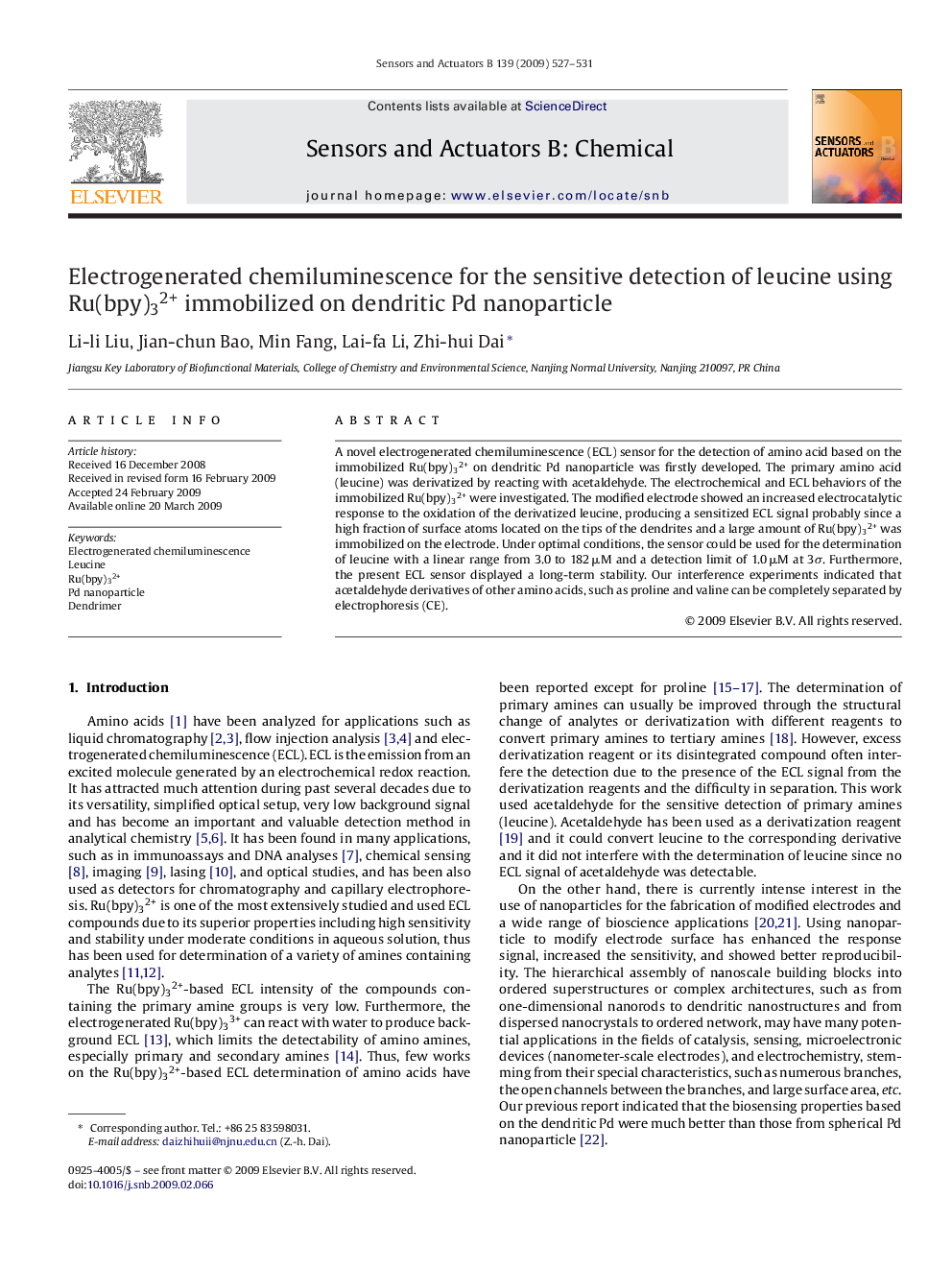| Article ID | Journal | Published Year | Pages | File Type |
|---|---|---|---|---|
| 745336 | Sensors and Actuators B: Chemical | 2009 | 5 Pages |
A novel electrogenerated chemiluminescence (ECL) sensor for the detection of amino acid based on the immobilized Ru(bpy)32+ on dendritic Pd nanoparticle was firstly developed. The primary amino acid (leucine) was derivatized by reacting with acetaldehyde. The electrochemical and ECL behaviors of the immobilized Ru(bpy)32+ were investigated. The modified electrode showed an increased electrocatalytic response to the oxidation of the derivatized leucine, producing a sensitized ECL signal probably since a high fraction of surface atoms located on the tips of the dendrites and a large amount of Ru(bpy)32+ was immobilized on the electrode. Under optimal conditions, the sensor could be used for the determination of leucine with a linear range from 3.0 to 182 μM and a detection limit of 1.0 μM at 3σ. Furthermore, the present ECL sensor displayed a long-term stability. Our interference experiments indicated that acetaldehyde derivatives of other amino acids, such as proline and valine can be completely separated by electrophoresis (CE).
